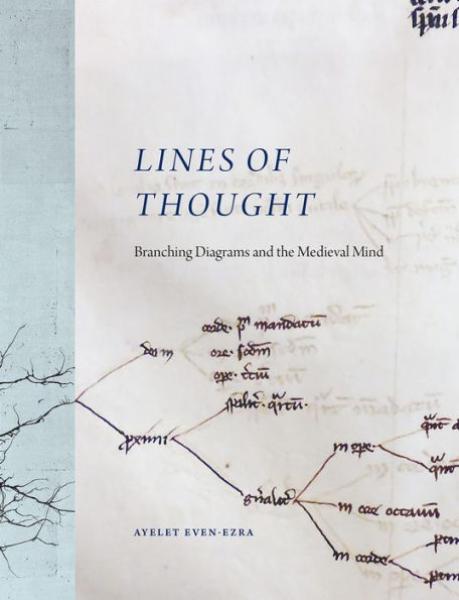Description
These diagrams not only allow a glimpse into the thinking practices of the past but also constitute a chapter in the history of how people learned to rely on external devices--from stone to parchment to slide rules to smartphones--for recording, storing, and processing information. Beautifully illustrated throughout with previously unstudied and unedited diagrams, Lines of Thought is a historical overview of an important cognitive habit, providing a new window into the world of medieval scholars and their patterns of thinking.
"Lines of Thought is the first book to investigate the surprisingly prevalent yet poorly studied habit of drawing horizontal tree diagrams in manuscripts. The branches of these diagrams ultimately evolved into what we know today as curly brackets. By following this notational practice from its earliest confirmed instances around 1200 up to the introduction of print, and by combining quantitative approaches with thorough case studies, the book provides a deep description and analysis of the peculiar thinking, reading, and writing practices of students and scholars of all faculties at a crucial phase in the Western intellectual tradition. Lines of Thought defines and explores the different cognitive functions such diagramming served and the manners by which it represented, clarified, and shaped conceptual structures in theology, philosophy, law, and medicine"--
Ayelet Even-Ezra is a senior lecturer in the History Department at the Hebrew University of Jerusalem. She is the author of Ecstasy in the Classroom: Trance, Self, and the Academic Profession in Medieval Paris and her articles have appeared in Harvard Theological Review, Traditio, and the Journal of Ecclesiastical History, among many other publications.
"Even-Ezra's study is an excitingly original contribution to the histories of cognitive psychology and information design that explores the question of how people were thinking, not just what they thought. Focusing on the logical horizontal tree diagrams that are ubiquitous in the margins of European medieval university manuscripts and early printed books, she demonstrates with much detailed evidence how these diagrams--too often dismissed by historians as mere 'doodling' by bored beginners--functioned as a primary means for medieval scholars to visually comprehend their learning. A compelling example of the Extended Mind Theory now prominent in modern neuropsychology, this book will be of interest not only to medieval historians, art historians, and scholars of the book, but to anyone with an interest in information design and associative learning practices."--Mary Carruthers, New York University
"Even-Ezra roots the history of ideas in her probing analysis of habits of reading materialized in the horizontal tree diagrams that fill the margins of medieval university manuscripts. Lines of Thought places the relationship between spatialized patterns of visualization and scholastic thought, famously formulated by Erwin Panofsky, on an entirely new footing. Applying concepts from linguistics and cognitive science within a framework inspired by Extended Mind Theory, the author reconstructs coordinated habits of hand and mind that remain as critical today in literary criticism, cognitive studies, and computational linguistics as they were to medieval theology, philosophy, literature, logic, law, and medicine. A brilliant and utterly original book."--Jeffrey F. Hamburger, author of Diagramming Devotion: Berthold of Nuremberg's Transformation of Hrabanus Maurus's Poems in Praise of the Cross
Product Details
- University of Chicago Pre Brand
- Apr 16, 2021 Pub Date:
- 022674308X ISBN-10:
- 9780226743080 ISBN-13:
- 272 Pages
- 11.1 in * 8.7 in * 1 in Dimensions:
- 2 lb Weight:




